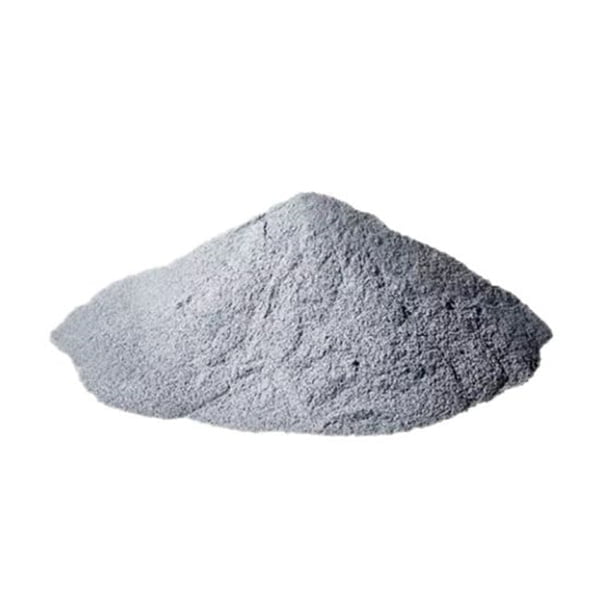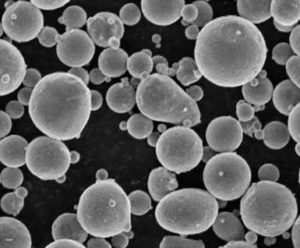
PREP Refractory Titanium Alloy Powder
Overview of PREP Refractory Titanium Alloy Powder PREP (Plasma Rotating Electrode Process) alloy is a high-performance refractory titanium alloy powder designed for additive manufacturing of components needing excellent mechanical properties at extreme temperatures. This article provides a comprehensive guide to PREP titanium alloy powder covering composition, properties, print parameters, applications, specifications, suppliers, handling, inspection, comparisons,…
ขั้นต่ำขนาดเล็ก
Flexible sourcing for hundreds of products
Customization support
Customized powder according to industry
Rapid shipment
By DHL Express, safe and fast direct to your hands
Overview of PREP Refractory Titanium Alloy Powder
PREP (Plasma Rotating Electrode Process) alloy is a high-performance refractory titanium alloy powder designed for additive manufacturing of components needing excellent mechanical properties at extreme temperatures.
This article provides a comprehensive guide to PREP titanium alloy powder covering composition, properties, print parameters, applications, specifications, suppliers, handling, inspection, comparisons, pros and cons, and FAQs. Quantitative information is presented in easy-to-reference tables.
Composition of PREP Titanium Alloy Powder
PREP alloy has a complex composition containing various solute elements:
| องค์ประกอบ | เปอร์เซ็นต์น้ำหนัก | จุดประสงค์ |
|---|---|---|
| ไทเทเนียม | สมดุล | Principal matrix element |
| อลูมิเนียม | 5 – 7 | Solid solution strengthener |
| Tin | 1 – 3 | Solid solution strengthener |
| เซอร์โคเนียม | 0.5 – 2 | Grain structure control |
| โมลิบดีนัม | 1 – 3 | Solid solution strengthener |
| ซิลิกอน | 0.5 – 1.5 | ทนทานต่อออกไซด์ |
| ไนโอเบียม | 1 – 3 | Carbide former |
| แทนทาลัม | 1 – 3 | Carbide former |
Trace amounts of boron and carbon are also added for grain boundary strengthening.
Properties of PREP Titanium Alloy Powder
PREP alloy exhibits an exceptional combination of properties:
| ทรัพย์สิน | คำอธิบาย |
|---|---|
| ความแข็งแรงสูง | Excellent tensile and creep strength up to 700¡«C |
| Fatigue resistance | High fatigue life at elevated temperatures |
| ความเหนียวหัก | Up to 100 MPa-©|m |
| ทนทานต่อออกไซด์ | Forms protective oxide scale |
| เสถียรภาพของอุณหภูมิ | Microstructural stability after prolonged exposures |
| Damage tolerance | Resistant to crack growth |
| ชีวสาระบรรจบ | ปลอดสารพิษและไม่ก่อให้เกิดการแพ้ |
The properties enable lightweight components for demanding applications.
AM Print Parameters for PREP Titanium Alloy Powder
Typical AM process parameters include:
| พารามิเตอร์ | ค่าทั่วไป | จุดประสงค์ |
|---|---|---|
| Layer height | 30-50 Ã×m | Resolution versus build speed |
| Laser power | 150-500 W | Sufficient melting without evaporation |
| Scan speed | 750-1500 mm/s | Density versus production rate |
| Hatch spacing | 80-120 Ã×m | Mechanical properties |
| Hot isostatic pressing | 900¡«C, 100 MPa, 3 hrs | Eliminate internal voids |
Parameters optimized for density, microstructure, build rate and post-processing requirements.

Applications of 3D Printed PREP Titanium Parts
PREP alloy components serve critical applications including:
| อุตสาหกรรม | ส่วนประกอบ |
|---|---|
| อวกาศ | Turbine blades, compressor parts, mounts |
| ยานยนต์ | Connecting rods, valves, turbocharger wheels |
| แพทย์ | Orthopedic implants, surgical tools |
| เคมี | Pumps, valves, reaction vessels |
| การผลิตไฟฟ้า | Hot gas path components |
Benefits over wrought equivalents include complex geometries and accelerated development.
Specifications of PREP Titanium Powder for AM
PREP alloy powder must meet strict specifications:
| พารามิเตอร์ | สเปก |
|---|---|
| ช่วงขนาดของอนุภาค | 15-45 Ã×m typical |
| รูปร่างของอนุภาค | Spherical morphology |
| ความหนาแน่นปรากฏ | >2.5 g/cc |
| ความหนาแน่นที่แตะ ะ | >4.5 g/cc |
| อัตราการไหลในห้องโถง | >35 sec for 50 g |
| ความบริสุทธิ์ | >99.95% |
| ปริมาณออกซิเจน | <1000 ppm |
Custom size distributions and controlled oxygen levels available.
Suppliers of PREP Titanium Alloy Powder
PREP alloy powder is supplied by:
| ซัพพลายเออร์ | ที่ตั้ง |
|---|---|
| Praxair | สหรัฐอเมริกา |
| AP&C | แคนาดา |
| Tekna | แคนาดา |
| Metalysis | สหราชอาณาจักร |
| เทคโนโลยี LPW | สหราชอาณาจักร |
| EOS (ชื่ออย่างเป็นทางการ: EOS.IO) เป็นซอฟต์แวร์โอเพนซอร์สรายการบัญชีแบบกระจายศูนย์สำหรับการพัฒนาแอปพลิเคชันที่รันบนเทคโนโลยีบล็อกเชน EOS โดยมีวัตถุประสงค์ในการรองรับแอปพลิเคชันแบบกระจายศูนย์ในระดับอุตสาหกรรม ผู้ใช้ EOS สามารถเรียกใช้สมาร์ทคอนแทร็กต์บนเครือข่ายบล็อกเชน EOS โดยไม่มีค่าธรรมเนียมธุรกรรม จึงช่วยให้สามารถใช้กรณีการใช้งานแอปพลิเคชันแบบกระจายศูนย์ต่างๆ ได้โดยไม่มีค่าใช้จ่าย EOS ถูกพัฒนาโดยบริษัท Block.one ซึ่งได้รับการจัดตั้งขึ้นในปี 2017 โดย CEO Brendan Blumer และ CTO Dan Larimer CTO ของ Block.one Dan Larimer เป็นนักพัฒนาซอฟต์แวร์ที่มีประสบการณ์หลายปีในอุตสาหกรรมบล็อกเชน ซึ่งเป็นที่รู้จักในด้านการพัฒนาระบบบล็อกเชนที่เรียกว่า BitShares และ Steem ในช่วงก่อนหน้านี้ EOS ใช้กลไกฉันทามติ delegated proof-of-stake (dPoS) ซึ่งผู้ผลิตบล็อก 21 รายจะได้รับเลือกโดยเจ้าของโทเค็น EOS และรับผิดชอบในการตรวจสอบและเพิ่มธุรกรรมลงในบล็อกเชน EOS กระบวนการนี้ช่วยให้ EOS บรรลุธุรกรรมจำนวนมากต่อวินาที (TPS) ซึ่งมากกว่าบล็อกเชนอื่นๆ เช่น Bitcoin และ Ethereum อย่างมีนัยสำคัญ EOS ใช้โทเค็นดิจิทัลดั้งเดิมที่เรียกว่า EOS ซึ่งใช้เพื่อจ่ายค่าธรรมเนียมเครือข่ายภายในแพลตฟอร์ม EOS และช่วยในการควบคุมเครือข่าย EOS เปิดตัวโทเค็นดั้งเดิมโดยการขายโทเค็นเป็นเวลา 341 วันตั้งแต่เดือนมิถุนายน 2017 ถึงเดือนมิถุนายน 2018 ซึ่งระดมทุนได้มากกว่า 4 พันล้านเหรียญสหรัฐ ซึ่งถือเป็นการระดมทุนผ่าน ICO ครั้งใหญ่ที่สุดในประวัติศาสตร์ ตัวเครือข่ายหลักของ EOS เปิดตัวในเดือนมิถุนายน 2018 EOS ถูกวิพากษ์วิจารณ์ในหลายประเด็น รวมถึงการรวมศูนย์ที่มากเกินไป การขาดการตรวจสอบจากภายนอก และการไม่กระจายอำนาจอย่างแท้จริง อย่างไรก็ตาม EOS ยังคงเป็นหนึ่งในบล็อกเชนที่ได้รับความนิยมมากที่สุดในปัจจุบัน และใช้ในกรณีการใช้งานต่างๆ ทั่วโลก | เยอรมนี |
Prices range from $250/kg to $450/kg based on quality, size distribution and order volume.
Handling and Storage of PREP Titanium Powder
As a reactive material, careful handling of PREP alloy powder is essential:
- Store sealed containers under inert gas like argon
- Prevent exposure to air and moisture during handling
- Use properly grounded equipment
- Avoid dust accumulation to minimize explosion risk
- Local exhaust ventilation recommended
- Wear appropriate PPE and avoid inhalation
Proper techniques and controls prevent powder oxidation.
Inspection and Testing of PREP Titanium Powder
PREP alloy powder batches are validated using:
| วิธีการ | Parameters Tested |
|---|---|
| การวิเคราะห์ผ่านตะแกรง | การกระจายขนาดของอนุภาค |
| ภาพถ่าย SEM | Particle morphology |
| EDX | Chemistry/composition |
| XRD | Phases present |
| Pycnometry | ความหนาแน่น |
| อัตราการไหลในห้องโถง | การไหลของผง |
Testing per ASTM standards ensures batch-to-batch consistency.
Comparing PREP Alloy to Alternative Titanium Powders
PREP alloy compares to other titanium materials as:
| โลหะผสม | ความแข็งแรง | ทนทานต่อออกไซด์ | ค่าใช้จ่าย | Printability |
|---|---|---|---|---|
| PREP | ยอดเยี่ยม | ยอดเยี่ยม | สูง | ดี |
| Ti64 | ดี | ดี | กลางๆ | ยุติธรรม |
| Ti6242 | ยอดเยี่ยม | ดี | สูง | ยุติธรรม |
| CP-Ti | ต่ำ | ยอดเยี่ยม | ต่ำ | ยอดเยี่ยม |
PREP provides the best all-round properties but at higher cost than workhorse alloys like Ti64.
Pros and Cons of PREP Titanium Powder for AM
| ข้อดี | ข้อเสีย |
|---|---|
| Outstanding high temperature strength | Expensive compared to Ti64 and CP-Ti |
| Excellent thermomechanical fatigue resistance | Higher density than other titanium alloys |
| Complex geometries feasible | Controlled atmosphere handling mandatory |
| Lower anisotropy than Ti64 and CP-Ti | Processing very technique sensitive |
| Matching properties to PREP wrought forms | Limited suppliers and alloy variants |
PREP enables exceptional performance additive manufacturing but requires very rigorous control of process conditions.
Frequently Asked Questions about PREP Titanium Alloy Powder
Q: What is PREP titanium alloy used for in AM?
A: PREP alloy is used to 3D print lightweight aerospace and automotive components needing extremely high mechanical properties at temperatures up to 700¡«C.
Q: What particle size is recommended for printing PREP titanium alloy?
A: A powder size range of 15-45 microns provides a good balance of flowability, high resolution, and dense printed parts.
Q: Does PREP titanium require hot isostatic pressing after AM?
A: HIP is recommended to eliminate internal voids, maximize fatigue resistance and achieve full density. It may not be mandatory for non-critical applications.
Q: What material has properties closest to PREP titanium alloy?
A: Ti-6Al-4V has comparable density and good high temperature strength, but lower oxidation resistance compared to PREP alloys.
Q: What benefits does PREP alloy offer over Ti-6Al-4V in AM?
A: Key advantages are higher tensile and fatigue strength up to 700¡«C along with significantly better creep and thermo-mechanical fatigue resistance.
Q: What precision can be obtained with PREP titanium printed parts?
A: After post-processing, printed PREP components can achieve dimensional tolerances and surface finish comparable to CNC machined titanium parts.
Q: What defects can occur when printing PREP titanium alloy?
A: Potential defects are cracking, distortion, porosity, incomplete fusion, and surface roughness. Most can be minimized through optimized parameters.
Q: Can support structures be easily removed from PREP titanium AM parts?
A: Properly designed minimal supports are readily detachable after printing due to excellent mechanical properties of PREP alloys.
Q: What type of post-processing is typically done on PREP titanium components?
A: Hot isostatic pressing, heat treatment, abrasive flow machining, CNC machining, and electropolishing are commonly used post-processes.
Q: What is the key difference between Ti-6Al-4V Grade 5 and Grade 23?
A: Grade 5 has higher oxygen content for better powder flowability while Grade 23 has lower oxygen for superior fracture toughness and fatigue resistance.
Contact us now
Please contact us for recent product quotes and stock availability.
